by Kusala Bhikshu
One of the questions I'm asked most often is... How did I become a Buddhist?
I was born and baptized a Lutheran in Iowa. My family moved to Arizona in 1954, I was five and have many fond memories of the Southwest. I spent my high school years in Wisconsin and in 1969 moved to Los Angeles, California. Because my teenage years were spent in the 60's -- "Don't trust anyone over 30 and question all authority" -- I became an agnostic.
At the age of twenty-eight, I went through what you might call an early mid-life crisis. I quit my job of seven years and went on a forty-five day road trip. I drove cross-country, sleeping at rest stops, in cheap motels, and campgrounds. The road trip offered me a chance to see how other people lived, and time to reflect on what my life was all about.
Back in Los Angeles, I found a new job, and within a year my old company rehired me. I quit smoking, joined a gym, and started looking into what it meant to be a conscious human being.
One day, this wonderful woman came into my life. She was beautiful, kind, and easy to be with. A selfless quality that seemed to come from her religious faith filled the air with love and warmth. She was a devout Christian, and I started going to church.
It wasn't long before I realized church and Christianity was not my cup of green tea. I lacked faith, I was skeptical and needed proof. I needed something more than words, I needed a personal experience. I wasn't feeling anything sitting passively in a pew, I wanted to be an active participant in my own salvation.
I bought a book by Houston Smith, called "The Religion's of Man," now called "The World's Religions," and read the whole thing. When I read the chapter on Buddhism, it made perfect sense. I knew nothing about Buddhism, but everything I read seemed to be true. I didn't know how or why it was true, but it was.
I was thirty, and had found a religion that was easy to understand (that would soon change) and meaningful, at least in the way Houston Smith presented it. Buddhism had many of the answers I was looking for, but it also created many new questions. I got another book, the phone book, and found the International Buddhist Meditation Center. The IBMC offered meditation and discussion every Monday night, and if you came early, free meditation instruction.
It was a cold and rainy night in Los Angeles, when I found myself on the doorsteps of the IBMC. The door was ajar, and I peeked in... People were sitting cross-legged on the floor. It was dimly lit, and the air was dense with the smell of incense. I walked in and was looking for a place to sit, when someone from behind tapped me on the shoulder, and pointed at the front door.
Standing just outside the door he spoke softly, he was one of the IBMC monks and asked whether this was my first time at the IBMC, I said, "Yes." We started walking toward the house next door as he spoke. There was a large piece of wood hanging over the doorway, with the words "Kwan Yin House."
Inside was the IBMC office, he asked me to have a seat. He then went on to say... The IBMC offers meditation and discussion every Monday night... With an hour of meditation and an hour or more of discussion. Shinzen, the vice-Abbot gives a Dharma talk after the meditation and then opens it up for questions and answers. If I had any questions, he said that was the time to ask them.
I was also given a brief introduction in Zendo (meditation hall) etiquette... Always take your shoes off before you enter, do not speak and try not to have too much eye contact. There is a Japanese meditation cushion call a safu, which makes sitting a bit more stable. Count your breath... 1, 2, 3, 4, up to 10, and then back down to 1... If your mind wanders just bring it back to 1.
I was ready to do my first Buddhist meditation. There was still a half hour left, and I took my place. It was terrible... My knees hurt, my back felt strained, and my mind was running like an open faucet. After 15 minuets I had to move my legs, the blood had stopped and my toes were tingling.
The gong rang, and meditation was over... Shinzen began to talk, and I was hooked.
He was eloquent, poetic, and scientific as he spoke about Buddhism, and from that point on, I wanted to see the world the way he did. The only catch was -- If I wanted to see the world through his eyes, the eyes of a Buddhist, I had to meditate and study the teaching's of the Buddha.
Before finding Buddhism, I thought life was pretty good. Suffering seemed to be what other people did. All I had to do was insulate myself from the world around me, and life wouldn't be a problem.
We all have to start somewhere, and I started at the very beginning.
In my first year of Buddhist practice, I took the three refuges and five precepts of a lay Buddhist, and was given the name 'Kusala'. Kusala as it turns out means skillful in the canonical language of early Buddhism. Shinzen explained, I was given the name Kusala, not because I was already skillful, but because I needed to become more skillful. My Buddhist name would remind me each day, what the goal of my practice was.
For two years I studied with Shinzen, and for seventeen years until his death, with Ven. Dr. Havanpola Ratanasara (a Theravada elder from Sri Lanka).
Dr. Ratanasara was an extraordinary monk. His parents gave him over to the local Buddhist temple to be raised as a monk at the age of twelve. This happens a lot in Sri Lanka. He had been a Sri Lankan delegate to the United Nations, he went to University in both England and the United States, and was the senior monk from his Buddhist tradition in the United States. Shinzen had recommended Dr. Ratanasara, when I shared my interest in early Buddhism with him.
How lucky I was to be living in LA, where every tradition of Buddhism was represented, and to have someone like Dr. Ratanasara take me through the many twists and turns of the Buddhist path. Dr. Ratanasara became my spiritual father. He would encourage me when I was down and bring me back into balance, when I was too confident. He was a cheerleader, friend, confidant, teacher, mentor, and most of all an example of how to be a Buddhist in America.
Dr. Ratanasara encouraged me to investigate the monastic lifestyle... Being a monk, he said, would allow me time to practice, study, and be of service. Being of service was very much a part of his life as a monk, and would soon become part of mine as well. He always said, Buddhism was here to stay, and American monks and nuns should be teaching the Dharma to other Americans, in a way Americans can understand.
In 1993 I moved into the IBMC, and took the eight vows of a postulant, which is the starting point of formal ordination. After holding the eight vows for a year, I accepted the ten vows of a novice monk, and was given the Buddhist name Kusala Ratana Karuna (Skillful Jewel of Compassion). After two years as a novice, I ordained as a Bhikshu (monk) in the Zen tradition of Vietnam and was given the name Thich Tam-Thien (Heavenly Heart Mind). Because the IBMC was founded by Thich Thien-An, a Vietnamese monk, finial ordination was in his tradition of Vietnamese Zen.
Some of the reasons people become Buddhist's in America: They want a new religion; It's cool to be a Buddhist; They want to understand the meaning of life; They like the Dalai Lama; They want to feel good about themselves.
It has been seven years since my Bhikshu ordination, and when I'm asked why I became a Buddhist monk, my answer is: "Because life is filled with suffering, and death is sure to come."
Being a Buddhist is about living and dying fully in the present moment with compassion and wisdom. It's not about clinging to the past, or being attached to the future. With a focus on the here and now, the ever-changing quality of Samsara, and the unchanging perfection of Nirvana can become a personal truth.
With no one to be, there is much to do. The end of suffering is my goal, death is my copilot, and the teaching's of the Buddha are my refuge.
Friday, March 26, 2010
Subscribe to:
Post Comments (Atom)











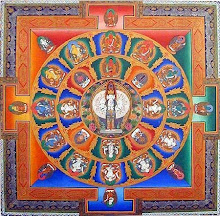




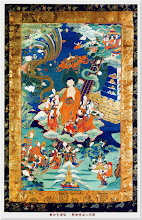

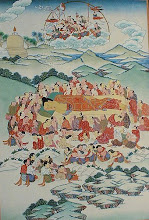


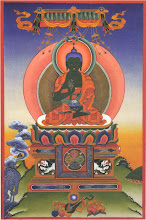




.jpg)

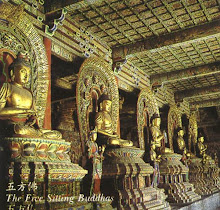













No comments:
Post a Comment